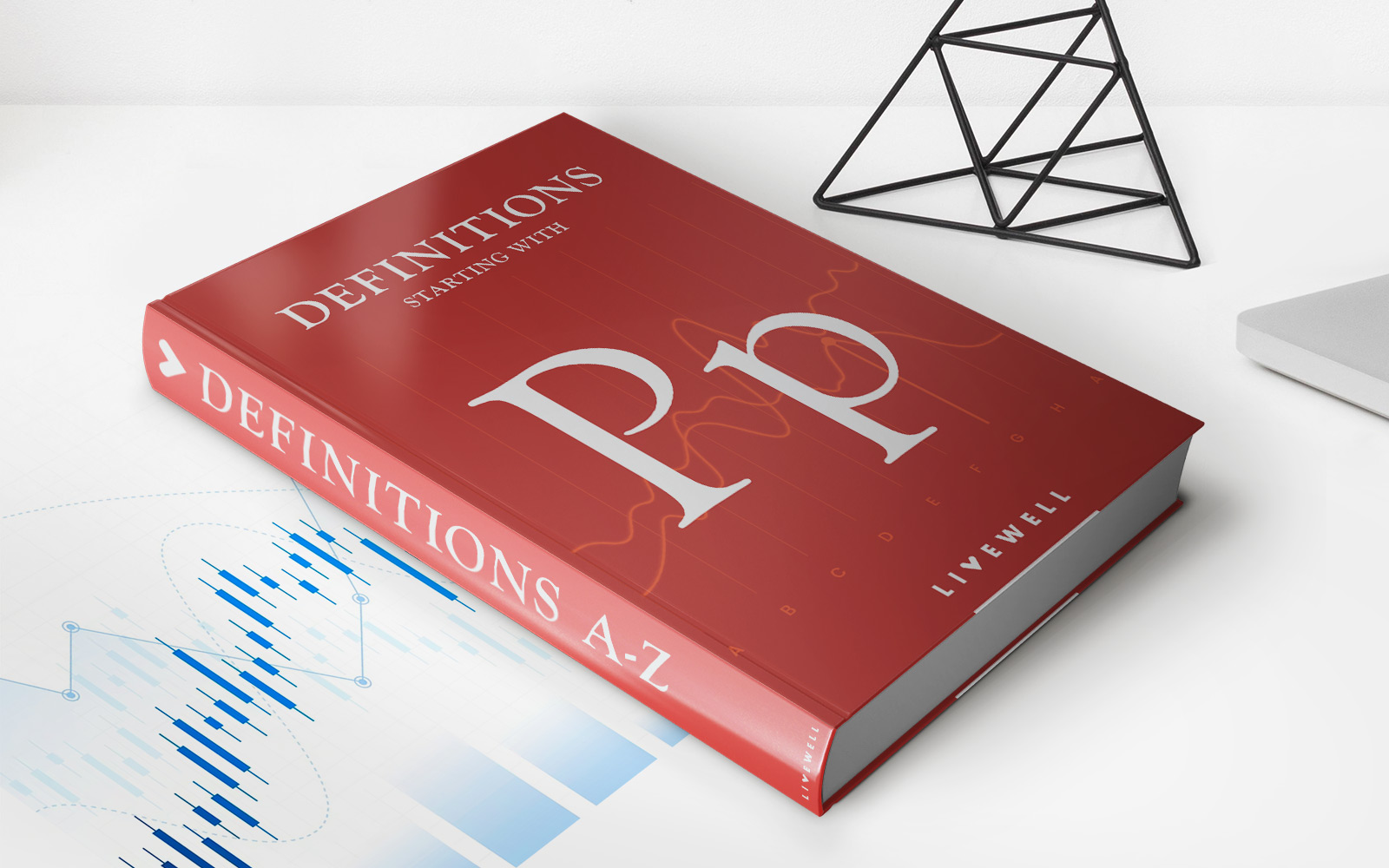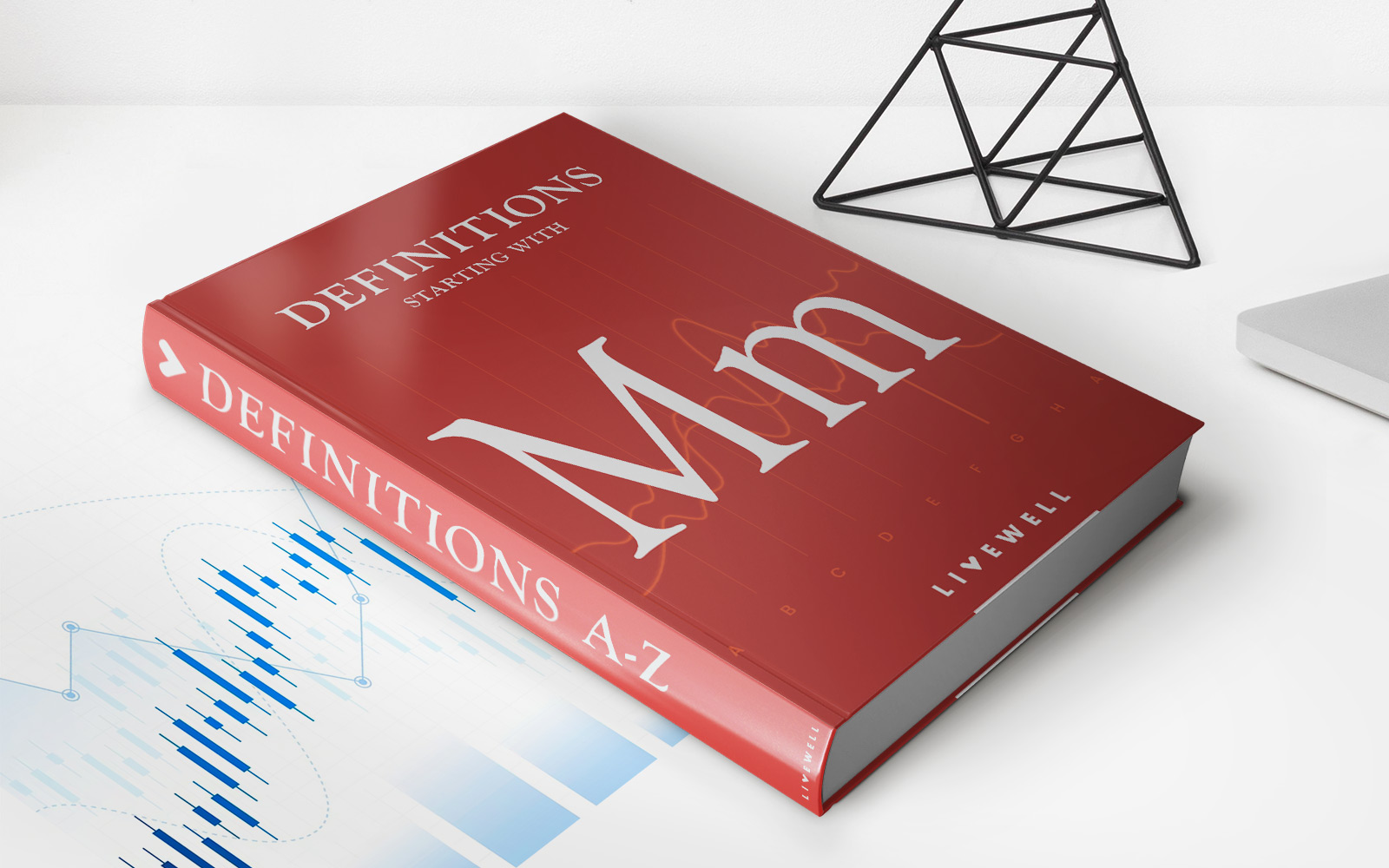

Finance
How Long To Pay Off 100K Student Loans
Published: January 20, 2024
Want to know how long it takes to pay off $100K in student loans? Discover effective finance strategies and achieve freedom from debt.
(Many of the links in this article redirect to a specific reviewed product. Your purchase of these products through affiliate links helps to generate commission for LiveWell, at no extra cost. Learn more)
Table of Contents
Introduction
Student loans have become a common financial burden for many individuals seeking higher education. According to recent statistics, the average student loan debt in the United States is around $30,000 per borrower. However, there are those who face an even greater challenge – repaying $100,000 in student loans.
Repaying a six-figure student loan debt may seem overwhelming at first, but with careful planning and the right repayment strategies, it is possible to tackle this financial obligation and achieve debt freedom. In this article, we will explore the various factors that can affect the repayment process, as well as the different loan repayment options available to borrowers.
It’s important to note that the length of time it takes to pay off $100,000 in student loans can vary significantly depending on several factors, such as the interest rate, the chosen repayment plan, and the borrower’s income. By understanding these factors and exploring the available options, borrowers can make informed decisions about their repayment strategy.
Whether you are a recent graduate with a substantial debt load or a seasoned professional looking to finally become free of student loan debt, this article will provide you with the information and insights you need to navigate the journey towards financial freedom. Let’s dive in!
Factors Affecting Loan Repayment
When it comes to repaying $100,000 in student loans, several factors come into play that can impact the length and ease of the repayment process. It’s essential to consider these factors when developing a repayment strategy. Here are some key factors to keep in mind:
- Interest Rate: The interest rate on your student loans will significantly impact the total amount you’ll end up paying over time. Higher interest rates mean more interest accrual, increasing the total cost of the loan. It’s important to explore options to lower the interest rate, such as refinancing or consolidating the loans.
- Repayment Plan: The repayment plan you choose has a direct impact on the monthly payment amount and the overall timeline for repayment. Different plans, such as standard, graduated, extended, and income-driven repayment, offer varying terms and options. It’s important to select a plan that aligns with your financial situation and long-term goals.
- Income: Your income level plays a crucial role in determining how much you can afford to pay towards your student loans each month. Higher income allows for larger payments, potentially helping you pay off the debt faster. On the other hand, lower income may make it necessary to explore income-driven repayment plans that tie monthly payments to your income level.
- Extra Repayments: Making extra payments towards your student loans can significantly accelerate the repayment process. Even small additional payments can help reduce the overall interest and shorten the repayment timeline. Assess your budget and find ways to allocate extra funds towards loan repayment, such as cutting unnecessary expenses or increasing your income through side gigs.
- Employment Opportunities: Your job prospects and career opportunities can affect your ability to repay student loans. Securing a higher-paying job or pursuing career advancement can lead to an increase in income, making it easier to handle loan payments. Explore options like negotiating salary increases, advancing in your current field, or seeking additional sources of income.
Considering these factors and their impact on loan repayment allows borrowers to make informed decisions and develop strategies tailored to their unique circumstances. By understanding the financial landscape and exploring the available options, borrowers can navigate the path towards becoming debt-free.
Loan Repayment Options
When facing the task of repaying $100,000 in student loans, it’s important to be aware of the different repayment options available. Each option offers its own set of terms and benefits, allowing borrowers to choose the one that best suits their financial situation and goals. Here are some common loan repayment options to consider:
- Standard Repayment Plan: This is the default repayment option offered by most loan servicers. The loans are typically repaid over a period of 10 years with fixed monthly payments. While this option results in higher monthly payments, it allows borrowers to pay off the loan in the shortest timeframe.
- Graduated Repayment Plan: This plan starts with lower monthly payments that gradually increase over time. It provides flexibility for borrowers whose income is expected to increase significantly in the future. Graduated repayment plans usually have a repayment period of 10 years.
- Extended Repayment Plan: Ideal for borrowers who need lower monthly payments, the extended repayment plan extends the repayment period beyond the standard 10-year term. Depending on the borrower’s loan balance, this plan can provide repayment terms of up to 25 years. It’s important to note that while the lower monthly payments may be more manageable, it also means paying more interest over time.
- Income-Driven Repayment Plans: These plans tie loan payments to the borrower’s income, resulting in affordable monthly payments based on a percentage of their discretionary income. Popular income-driven repayment options include Income-Based Repayment (IBR), Pay As You Earn (PAYE), and Revised Pay As You Earn (REPAYE). These plans typically have a repayment period of 20 to 25 years and offer loan forgiveness after that timeframe.
It’s important to explore each repayment option, understand its terms, and calculate the potential monthly payments. This will help borrowers determine which plan aligns best with their financial situation and goals. Additionally, borrowers may have the option to change their repayment plan over time if their circumstances change.
Remember, there is no one-size-fits-all solution when it comes to loan repayment options. Each borrower’s unique financial situation will dictate which option makes the most sense. Taking the time to research and evaluate these options allows borrowers to make an informed decision that will set them on the path to successfully repaying their $100,000 in student loans.
Standard Repayment Plan
The standard repayment plan is the most common and straightforward option for repaying student loans. It is the default plan offered by loan servicers and is designed to help borrowers pay off their loans in a fixed period of time, typically 10 years.
Under the standard repayment plan, borrowers make equal monthly payments over the course of the repayment period. The monthly payment amount is determined based on the loan amount, interest rate, and the selected repayment term. Since the repayment term is fixed, the monthly payments are typically higher compared to other repayment options, but the loan is paid off sooner.
For borrowers with $100,000 in student loans, the standard repayment plan can be a viable option. Monthly payments are calculated to cover both principal and interest, ensuring that borrowers steadily reduce their loan balance over time. With this plan, borrowers can expect to pay off their loans in 10 years, provided they make all the required payments on time.
One advantage of the standard repayment plan is that it minimizes the total interest paid over the life of the loan. Since the repayment term is relatively short, less interest accrues. This means borrowers will ultimately pay less for their loans compared to other plans that extend the repayment period.
However, the higher monthly payments required by the standard repayment plan may pose a challenge for some borrowers. It’s crucial to assess your financial situation to ensure that you can comfortably afford the monthly payments. If the standard plan is too financially burdensome, exploring other repayment options, such as income-driven plans or loan consolidation, may be a better fit.
It’s important to note that while the standard repayment plan offers a standardized approach to loan repayment, it may not be the best option for everyone. Factors like income level, career trajectory, and other financial obligations should be considered when deciding on a repayment plan.
Before committing to the standard repayment plan, borrowers should assess their budget and evaluate whether they can comfortably afford the monthly payments. It’s also beneficial to compare the pros and cons of other repayment options to find the best fit for their financial goals. By choosing the right repayment plan, borrowers can successfully pay off their $100,000 student loans and achieve financial freedom.
Graduated Repayment Plan
The graduated repayment plan is an alternative option for borrowers looking to repay their $100,000 student loans. This plan offers flexibility with lower initial monthly payments that gradually increase over time.
Under the graduated repayment plan, borrowers start with lower monthly payments during the early years of repayment. Typically, these initial payments cover only the interest accruing on the loan. However, as time goes on, the monthly payments increase, allowing borrowers to pay off the loan within a fixed period, often 10 years.
This repayment option is particularly suitable for borrowers who anticipate an increase in their income over time or those who need some temporary relief during the early years of their careers. The lower initial payments provide borrowers with some flexibility to manage their finances, especially during the period when their income might be lower.
One advantage of the graduated repayment plan is that it allows borrowers to gradually adjust to higher monthly payments as their income grows. This can be beneficial for those who expect their earnings to increase significantly in the future due to career advancements or salary raises.
However, it’s important to consider that the overall interest paid under the graduated repayment plan may be higher compared to the standard plan. Since the initial payments only cover the interest, the loan balance may not decrease as quickly in the early years. As a result, more interest accrues over the life of the loan, resulting in a higher total repayment amount.
Before opting for the graduated repayment plan, borrowers should carefully assess their income trajectory and ability to handle increasing monthly payments. It’s essential to ensure that the anticipated income growth can support the higher payments in later years. If there is uncertainty regarding income prospects, it may be wise to consider other repayment options.
Ultimately, the graduated repayment plan offers borrowers flexibility in their student loan repayment journey. It aligns with a borrower’s income progression and allows for a more manageable repayment structure. By carefully evaluating their financial situation, borrowers can make an informed decision regarding the graduated repayment plan and reach their goal of repaying their $100,000 student loans.
Extended Repayment Plan
The extended repayment plan offers borrowers with $100,000 in student loans an alternative option for managing their loan payments. Designed to provide more manageable monthly payments, this plan extends the repayment period beyond the standard 10-year term.
Under the extended repayment plan, borrowers have the option to repay their loans over a timeframe of up to 25 years. By spreading out the payments over a longer period, the monthly payments are reduced, making them more affordable for borrowers. The extended repayment plan is particularly suitable for those who need lower monthly payments to fit within their budget constraints.
One advantage of the extended repayment plan is that it can help borrowers avoid financial hardship by alleviating the immediate burden of high monthly payments. By extending the repayment period, borrowers can adjust their budgets and allocate funds towards other essential expenses while still making progress on their loan repayment.
However, it’s important to consider that extending the repayment period also means paying more in interest over the life of the loan. Since the loan balance is not paid off as quickly, interest continues to accrue, resulting in a higher overall cost of borrowing. Borrowers should carefully weigh the benefits of lower monthly payments against the additional interest payments when selecting the extended repayment plan.
It’s worth noting that not all borrowers will qualify for the extended repayment plan. Some loan programs and lenders may have specific eligibility criteria, such as minimum loan amounts or specific loan types. It’s important to check with your loan servicer or lender to determine if you meet the requirements for the extended repayment plan.
Additionally, borrowers should consider their long-term financial goals when opting for the extended repayment plan. While lower monthly payments may provide temporary relief, it’s crucial to evaluate the impact of an extended repayment timeline on their overall financial health. For some borrowers, prioritizing paying off the loan more quickly may be a more desirable option to reduce overall interest payments and achieve debt freedom in a shorter timeframe.
The extended repayment plan offers borrowers more flexibility and affordability in managing their $100,000 student loans. By carefully considering the monthly payment obligations and the potential impact on overall loan cost, borrowers can make an informed decision that aligns with their financial goals.
Income-Driven Repayment Plans
For borrowers facing the challenge of repaying $100,000 in student loans, income-driven repayment plans offer a valuable solution. These plans are designed to align loan payments with a borrower’s income, making them more manageable and affordable.
There are several income-driven repayment plans available, including Income-Based Repayment (IBR), Pay As You Earn (PAYE), and Revised Pay As You Earn (REPAYE). These plans calculate monthly payments based on a percentage of the borrower’s discretionary income, which is determined by their income and family size.
The primary advantage of income-driven repayment plans is that they make loan payments more affordable for borrowers by capping the monthly payment amount. The lower monthly payments are particularly beneficial for borrowers with high loan balances and lower income levels. Additionally, income-driven plans typically offer loan forgiveness after a certain period, usually between 20 to 25 years of consistent payments.
Another benefit of income-driven repayment plans is that they provide flexibility for borrowers whose income may fluctuate over time. If a borrower experiences a decrease in income or faces financial hardship, they can request to recalculate their monthly payments based on their updated income. This ensures that loan payments remain affordable, even during periods of financial instability.
It’s important to note that while income-driven repayment plans offer lower monthly payments, they may result in a longer repayment period compared to other plans. Since monthly payments are tied to income, they can vary annually based on income changes, potentially extending the overall repayment timeline.
Additionally, it’s crucial to understand the tax implications of income-driven plans, as any forgiven amount at the end of the repayment period may be taxable as income. Borrowers should consult with a tax advisor to fully understand the potential tax consequences of participating in income-driven repayment plans.
Before enrolling in an income-driven repayment plan, borrowers should ensure they meet the eligibility requirements and evaluate the potential pros and cons. Understanding the income-driven plan’s impact on monthly payments, loan forgiveness options, and overall repayment duration is essential for making an informed decision.
Income-driven repayment plans can provide much-needed relief for borrowers facing $100,000 in student loans and struggling to meet their financial obligations. By aligning loan payments with income, these plans offer a path to more affordable and manageable repayment, allowing borrowers to stay on track towards becoming debt-free.
Public Service Loan Forgiveness
For borrowers with $100,000 in student loans who work in public service or nonprofit organizations, the Public Service Loan Forgiveness (PSLF) program can be a game-changer. PSLF offers a path to loan forgiveness after 120 qualifying payments, typically made over the course of 10 years.
To be eligible for PSLF, borrowers must meet certain requirements:
- Work full-time for a qualifying public service or nonprofit organization.
- Have Direct Loans (or consolidate other federal student loans into a Direct Consolidation Loan).
- Enroll in an income-driven repayment plan.
- Make 120 qualifying payments while working for a qualifying employer.
The PSLF program provides a valuable opportunity for borrowers working in public service careers, such as public health, government, education, or nonprofit organizations, to have their remaining loan balance forgiven after completing the required period of service and making qualifying payments.
It’s crucial to carefully follow the guidelines and requirements of the PSLF program to ensure eligibility for forgiveness. It is recommended that borrowers annually submit the Employment Certification Form to track progress and confirm their qualifying employment status.
One significant advantage of the PSLF program is that the forgiven amount is not taxable. This can provide substantial financial relief for borrowers who may otherwise face a large tax burden with other loan forgiveness programs.
However, it’s essential to note that the PSLF program has faced some challenges and uncertainties regarding qualifying criteria and approval rates. It’s advised that borrowers thoroughly research the program and regularly stay updated on any changes or updates to protect their eligibility.
For borrowers committed to public service careers and who meet the program requirements, PSLF offers a clear path towards loan forgiveness, making it an attractive option for individuals with $100,000 in student loans. By carefully following the guidelines and ensuring eligibility throughout the repayment period, borrowers can attain financial freedom while making a positive impact through their public service work.
Loan Refinancing and Consolidation
For borrowers seeking to manage their $100,000 in student loans more effectively, loan refinancing and consolidation can be viable options. These strategies can help simplify loan repayment and potentially save money on interest payments. Let’s explore these two approaches:
Loan Refinancing: Refinancing involves replacing existing loans with a new loan from a private lender. The new loan typically has a lower interest rate, allowing borrowers to save on interest payments over the life of the loan. Refinancing can also involve extending the repayment period, resulting in lower monthly payments. However, it’s important to note that refinancing federal loans with a private lender may lead to the loss of certain federal loan benefits, such as income-driven repayment plans or loan forgiveness programs. Assess the pros and cons carefully before deciding to refinance.
Loan Consolidation: Consolidation involves combining multiple loans into a single loan. This can simplify the repayment process by having one monthly payment instead of multiple payments to different loan servicers. Consolidation can also lead to potential benefits, such as the ability to switch to a different repayment plan or become eligible for loan forgiveness programs. However, consolidation does not lower the interest rate, and the overall repayment period may be extended, resulting in higher total interest paid over time. Be sure to consider the trade-offs before deciding to consolidate your loans.
Before refinancing or consolidating your $100,000 student loans, it’s essential to research different lenders and loan options thoroughly. Compare interest rates, repayment terms, and any fees associated with refinancing or consolidation to ensure you are making a financially sound decision. Additionally, carefully review the terms and conditions of your current loans to understand any implications or benefits associated with refinancing or consolidation.
Loan refinancing and consolidation can be effective strategies for borrowers looking to simplify the repayment process and potentially save on interest payments. However, it’s important to weigh the potential benefits against the loss of federal loan benefits or the potential costs associated with extending the repayment period. Consider your financial goals, eligibility for loan programs, and long-term financial plans before making a decision.
Strategies for Paying Off Student Loans Faster
For borrowers eager to tackle their $100,000 student loans expeditiously, employing effective strategies can make a significant difference in accelerating the payoff process. Here are some strategies to consider:
- Create a Budget: Establishing a comprehensive budget is crucial for managing expenses and allocating funds specifically for loan repayment. Identify areas where you can reduce spending and redirect those funds towards your student loans.
- Make Biweekly Payments: Instead of making monthly payments, consider making payments every two weeks. By doing so, you effectively make an extra month’s payment over the course of a year, reducing the principal balance faster.
- Make Extra Payments: Whenever possible, make additional payments towards your student loans. Even small amounts can add up and help reduce the principal balance. Allocate windfalls, tax refunds, or any extra income towards paying down your loans.
- Target High-Interest Loans: If you have multiple loans, prioritize paying off those with the highest interest rates first. By focusing on these loans, you’ll minimize the amount of interest that accrues over time.
- Consider Loan Forgiveness Programs: Explore loan forgiveness programs such as the Teacher Loan Forgiveness Program or the Public Service Loan Forgiveness Program if you are eligible. Meeting the criteria for these programs can result in a portion or complete forgiveness of your student loans.
- Generate Extra Income: Look for opportunities to increase your income. Take on a part-time job, freelance work, or start a side business. Use the extra income generated to make higher loan payments and pay off your loans faster.
- Refinance or Consolidate: Explore the option of refinancing your student loans to secure a lower interest rate. Alternatively, consolidating your loans can simplify repayment and potentially offer more favorable terms. Assess the pros and cons before deciding which option is best for you.
- Stay Motivated: Paying off $100,000 in student loans requires dedication and perseverance. Keep your end goal in mind and stay motivated. Celebrate milestones along the way to maintain your enthusiasm and commitment to becoming debt-free.
Implementing these strategies requires discipline and careful financial planning. It’s essential to assess your financial situation, evaluate the impact of different strategies, and create a customized plan that aligns with your goals. Remember, the more proactive and consistent you are with your repayment efforts, the faster you’ll be able to eliminate your student loan debt.
Conclusion
Repaying $100,000 in student loans may seem like a daunting task, but with careful planning and the right strategies, it is possible to achieve financial freedom. By considering the factors that affect loan repayment, exploring different repayment options, and implementing effective strategies, borrowers can tackle their debt and make significant progress towards becoming debt-free.
Factors such as interest rates, income levels, and repayment plans play a vital role in shaping the loan repayment process. Borrowers should carefully evaluate these factors to determine the best approach for their unique circumstances. Whether it’s choosing a standard repayment plan, a graduated plan, an extended plan, or an income-driven plan, borrowers should select the option that aligns with their financial goals and capabilities.
Additionally, taking advantage of programs like Public Service Loan Forgiveness or refinancing and consolidation can provide opportunities to streamline repayment and potentially save on interest payments. Evaluating the eligibility and potential benefits of these programs is essential for borrowers seeking to optimize their repayment strategy.
Finally, implementing effective strategies such as creating a budget, making extra payments, and targeting high-interest loans can accelerate the repayment process. Generating extra income, staying motivated, and celebrating milestones along the way are also important factors in staying committed to paying off student loans faster.
Remember, each borrower’s situation is unique, and what works for one person may not work for another. It’s crucial to carefully assess your financial situation, explore the available options, and develop a strategy that aligns with your goals and circumstances.
By implementing these strategies, being proactive in managing your finances, and staying dedicated to your repayment plan, you can successfully navigate the journey towards paying off your $100,000 student loans and achieve the financial freedom you desire.














